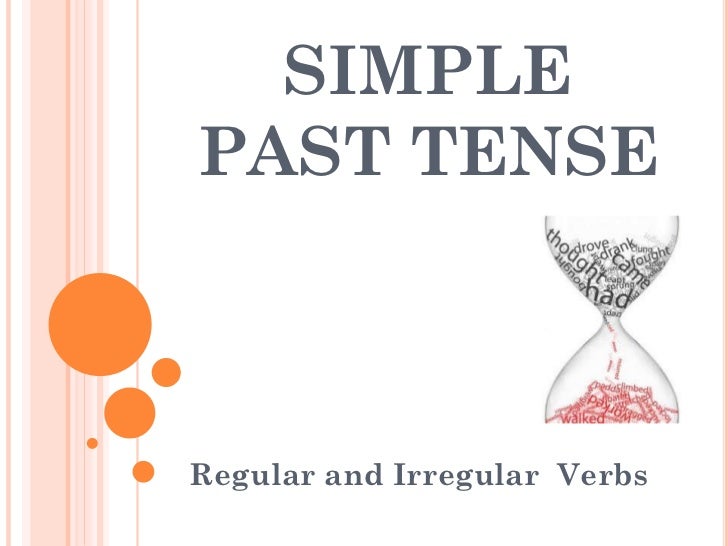

One of the reasons speakers often come across as not natural speakers of English is because they choose the wrong verb form. Learning the patterns of regular verbs and understanding irregular verbs really helps us to understand English and be fluent in its speaking. Please include attribution to with this graphic.
Give past tense and past participle for free#
Get started for free 50 Most common irregular verbs See if you can find the past simple and past participle of the following:įinally, try to find other verbs that fit into this group.

Other verbs in this group include the following: Past Participle: ‘The written word is a joy to read.’ For our example here, we will use the verb with the base form ‘write’. However, because there are three different forms of the verb (plus, of course, the gerund, or ‘ing’ form) there are more words to learn. Depending on which version of the verb is used, we will know how it is being employed. The simple side is that each form is different so we will not become confused between the base form, the past simple and the past participle.

Our final group of irregular verbs are in some ways the easiest, and in others the hardest ones to learn. Try to use these two verbs in their different forms in different sentences. Other verbs in this group include ‘become or became’ and ‘come or came’. Past Simple: ‘He ran to the finish line.’ This time we will use the verb ‘run’ as our example.īase Form: (here we are using the infinitive version) – ‘I love to run.’ The simply different group contain verbs where the simple past tense form of the word differs from the base and past participle use. A good exercise is to try to find as many verbs as you can that fit this group. Other examples include the following verbs: ‘buy or bought’, ‘feel or ‘felt, ‘hear or heard’, ‘keep or kept’, ‘say or said’, ‘sell or sold’ and so on. This is a very large group of irregular verbs. Past Participle: ‘My glasses were found.’ For example, the verb ‘find’.īase Form: ‘Can you help me to find my glasses?’ Group Two – The Common PastĪs the name we have given them suggests, for these verbs the two past forms (past simple and past participle) are the same but the base form differs. Practice using these by putting them into sentences using the base form, simple past and past participle. Other verbs which fit into this constant group include ‘let’, ‘cost’, ‘put’ and so on. Past Participle (passive tense here): ‘My leg was hurt.’ (adjective use) ‘My hurt leg was painful.’ These are irregular verbs where the same form is used in the base, past simple and past participle. Sadly, there is no way beyond the hard grafts of learning and practising because, as the name suggests, irregular verbs do not follow a pattern. We have called each group by a name which will help us to remember them. Irregular Verbsīut these are not! Because, like oddly shaped piece of furniture which does not fit easily into a room, so the 200 or so irregular verbs do not fit easily into a sentence.Ī top tip is to learn irregular verbs in four separate groups. The same is true for ‘arrive’, for ‘wait’ and so forth, (We still add ‘ing’ when we use the gerund, and add ‘to’ when turning it into).ĭo, for example, the verb ‘call’ is ‘call’ in its base form, then ‘called’ in both the past simple and past participle. If the verb ends in a ‘y’ we change the last letter to an ‘I’ and then add the ‘ed’. We simply add ‘ed’ – ‘d’ if the verb already ends in an ‘e’ to turn the verb from its base form to the past simple or past participle form. We would expect it to be ‘singed’, but the word changes to ‘sung’. The other, though, starts to go wrong in the past participle. The second of these, ‘finish’ follows the rules to a tee and is therefore a regular verb. We have worked on two verbs in these examples, ‘sing’ and ‘finish’. ‘It was finished.’įinally, we can use the verb as an adjective, ‘The song is finished.’ We can use the passive form, which is preceded by an auxiliary (or helping) verb such as ‘was’. Usually, but not always, the addition of ‘ed’ turns the verb into the present perfect. The first is called the present perfect.Īs we can see, the action has just happened, it is in the present. Get started for free It’s Finished – The Part Participleįinally, we can use all verbs in three basic past participle forms.


 0 kommentar(er)
0 kommentar(er)
